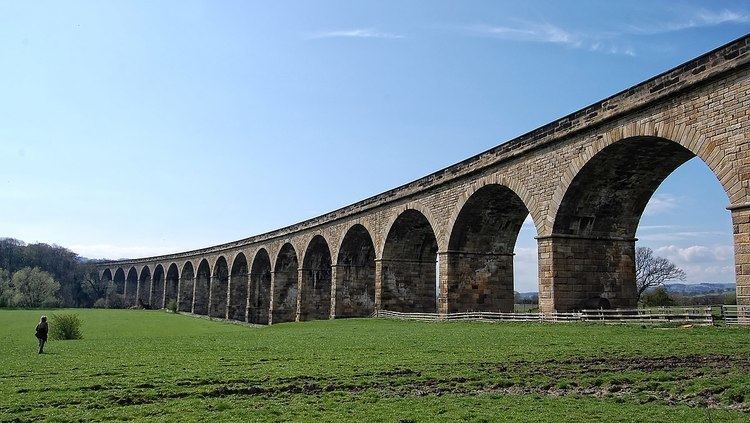Population 532 (2011 Census) Civil parish Arthington | OS grid reference SE273447 Local time Saturday 11:54 AM Dialling code 0113 | |
 | ||
Weather 9°C, Wind SW at 35 km/h, 87% Humidity | ||
Pool in wharfedale and arthington
Arthington is a small village in Wharfedale, in the City of Leeds metropolitan borough in West Yorkshire, England. It is a civil parish which, according to the 2011 census, had a population of 532 and is in the LS21 postcode district with Otley as its post town. It is in the Otley ward of the City of Leeds, and the Leeds North West parliamentary constituency.
Contents
- Pool in wharfedale and arthington
- Map of Arthington Otley UK
- Arthington Priory
- The Cluniac Prayer
- References
Map of Arthington, Otley, UK
There used to be a railway junction (see Arthington railway station), where the (now-closed) line to Pool-in-Wharfedale station, Otley station, Ilkley station, and on to Skipton station joined the still open Harrogate Line from Leeds to Harrogate station. Arthington station closed completely in 1965 but there is a campaign to re-open the station and the former Otley line.
The village is at the northern end of the Bramhope Tunnel. There is a memorial to the workers killed digging the tunnel near the church in Otley. The railway then crosses the dramatic stone Arthington Viaduct over the River Wharfe. The A659 Otley to Tadcaster road passes through the village.
Arthington's more recent claim to fame is that Creskeld Hall is used for filming the external shots of Home Farm in the ITV soap Emmerdale.
On 5 July 2014, the Tour de France Stage 1 from Leeds to Harrogate passed through the village.
Arthington Priory
The village was the site of Arthington Priory, one of only two Cluniac nunneries in England - the other being at Delapré Abbey in Northampton.
The Cluniac order was a branch of the Benedictines and fell under the rule of the great abbey at Cluny in Burgundy; the Benedictine order was a keystone to the stability that European society achieved in the 11th century, and partly owing to the stricter adherence to a reformed Benedictine rule, Cluny became the acknowledged leader of western monasticism from the later 10th century. A sequence of highly competent abbots of Cluny were statesmen on an international stage. The monastery of Cluny itself became the grandest, most prestigious and best-endowed monastic institution in Europe. The height of Cluniac influence was from the second half of the 10th century through the early 12th.
The Cluniac Prayer
"O God, by whose grace thy servants the Holy Abbots of Cluny, enkindled with the fire of thy love, became burning and shining lights in thy Church: Grant that we also may be aflame with the spirit of love and discipline, and may ever walk before thee as children of light; through Jesus Christ our Lord, who with thee, in the unity of the Holy Spirit, liveth and reigneth, one God, now and for ever."
